We caught up with the brilliant and insightful Liz Derby a few weeks ago and have shared our conversation below.
Liz, looking forward to hearing all of your stories today. Do you wish you had waited to pursue your creative career or do you wish you had started sooner?
I didn’t start working as a designer until I was 31 and didn’t start pursuing my own design business until 34. Even though I’ve always been creative and made art as a hobby, I was scared to pursue it as a career. Why would I be an artist when I’m good at math? Why would I give up stability to pursue a creative passion? It just didn’t seem like the safe choice, especially when I was making those first key decisions about my career path: what college to go to and what to major in. I loved art, but I was a straight A student in all AP classes and wanted to get into the most competitive college I could.
I ended up attending Northwestern University, first entering as an engineering student and later transferring to the school of arts and sciences where I majored in Political Science with a minor in History. I took as many painting and drawing classes as I could, even declaring an Art major for a couple years so I could get access to courses that were otherwise competitive to get into, but ended up dropping the major before graduating, not seeing the value in something that was, at the time, just something I was interested in, not something that could make me money.
I got my first job out of college in Marketing. It was a path that I chose because I was good at writing and enjoyed design–I thought maybe I could meld the two into something more creative. It was a creative role in some ways–writing copy, laying out emails, creating slide decks. I worked in marketing for almost 10 years before I decided I needed a change. I wanted to finally try and pursue design full time.
I quit my job and signed up for a UX Design Bootcamp where I received training and built a portfolio that I used to get my first job as a designer. I was surprised how easy it all came to me–how work felt like fun for the first time. I wished that I had let myself follow this passion sooner, applied to art school when I was 18. I felt frustrated by all the people around me and voices in my head saying that pursuing a creative career would be fruitless, hard work with no pay and no stability. It all felt like a big lie now that I had a salaried job in something creative that brought me joy as as well as real income.
A couple years later, I started pursuing Little Dipper Art, my side business, a little bit more seriously–first selling online and then applying to local art fairs. Now the business is growing more than I could have ever imagined–selling in gift shops, online, getting occasional freelance design work. It’s a dream, getting to do what I love. But sometimes I feel sad that I deprived myself of all of this just because I didn’t think it was practical.
On the other hand, maybe all the work I did in the beginning of my career prepared me for this to be successful. I know how to market myself. I know how to create a budget and think about profit margin. I know myself better–when to say no, when to create a boundary, when it’s ok to push myself. I’m also more grateful than I ever would have been had I pursued this from the start.
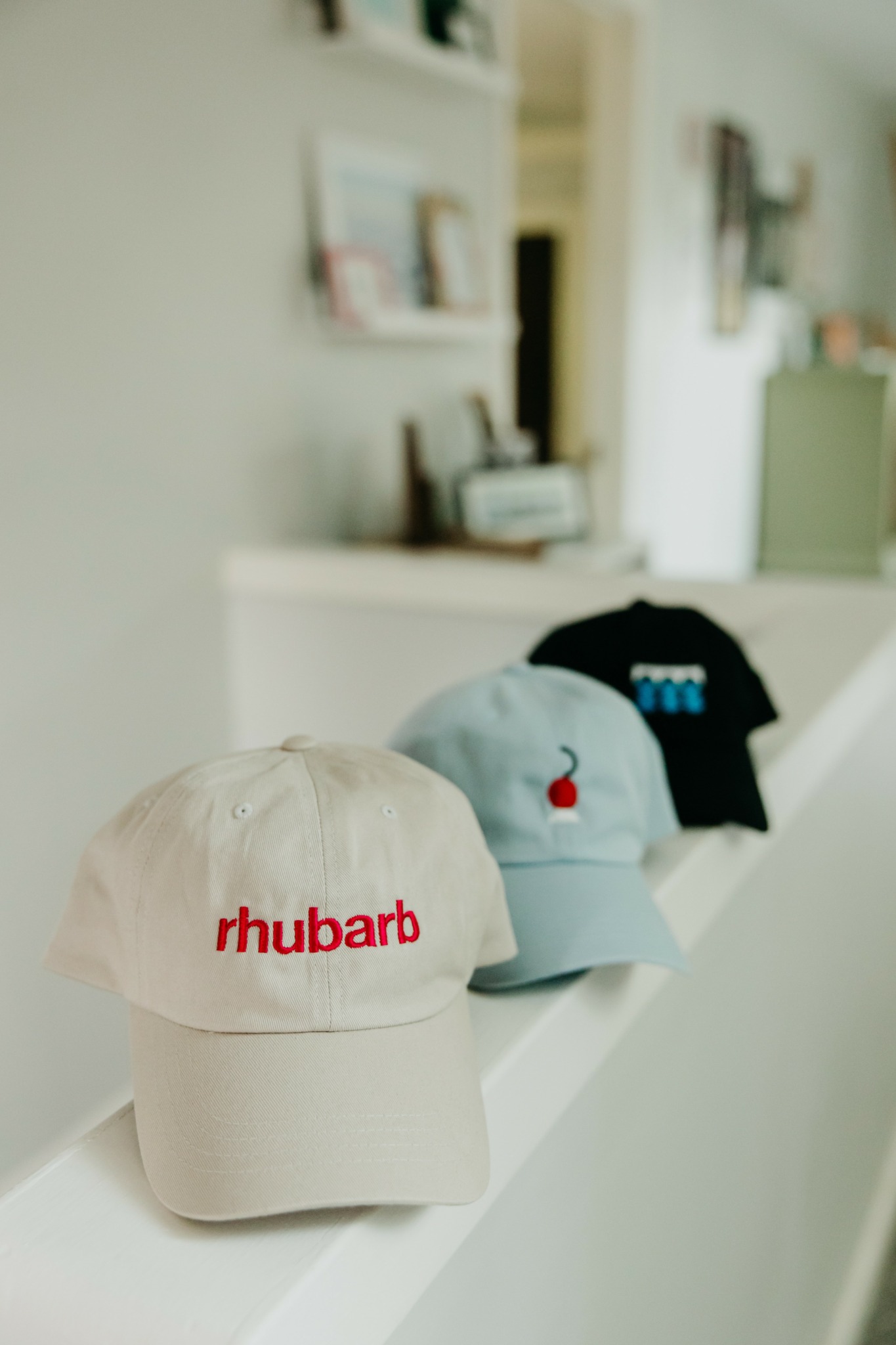

Liz, before we move on to more of these sorts of questions, can you take some time to bring our readers up to speed on you and what you do?
After starting my career in marketing, I now work full time as a UX Designer and run Little Dipper Art on the side. Little Dipper started as a way to create things I loved, for fun. It all started back in 2023 when I was trying to design a holiday card to send to friends that showed a Minneapolis landmark. I wanted something that felt unique, modern, and colorful–something I couldn’t just buy in a gift shop. I started iterating on a minimalist design of the Spoonbridge & Cherry sculpture, an icon in the Minneapolis Sculpture Garden that many think of as a symbol of Minneapolis.
Then I moved on to other landmarks like the Stone Arch Bridge, all the lakes in the Chain of Lakes, the Guthrie Theater, the IDS building, and more. I just couldn’t stop designing. I started posting one a day on Instagram with a short description of the history of the landmark or area. After getting a little traction from friends and family, I decided to print a short run of calendars featuring 12 of my designs. They all sold–many to friends, but some to people I had never met. It felt exhilarating! That following summer I sold my first wholesale order to the Mill City Museum earning me enough money to start investing in the business. I signed up for some summer markets, then holiday markets, then I bought my own printer so I could create gallery quality art prints at home.
As I’ve grown, I’ve continued to develop a unique minimalist style using shape and color to represent landmarks as well as fruits, flowers, and even music. I love seeing the joy on people’s faces when they recognize something. The idea is that the design evokes a memory, a feeling. Even though the shapes and forms may be minimal, I don’t shy away from color. Color brings me so much joy. I get inspiration from artists like Ellsworth Kelly, Josef Albers, and Hilma af Klimt–those who really understood color and form.
I sell art prints, greeting cards, magnets, and more all printed with my designs. It’s been fun to translate the art print designs to other forms like hats, pins, coffee mugs, and wrapping paper. They all start from the same place but have to be updated for different formats. I hope to move into even more forms as the business grows. I would love to experiment with more textile design and housewares in the future.


What do you find most rewarding about being a creative?
Seeing new people experience the work. Whenever I do a market I get filled with so much gratitude and joy seeing people’s eyes light up when they see my designs. I love hearing stories about how my rhubarb print reminds me of their grandmother or how my Stone Arch Bridge print reminds them of their first date with their spouse. I get to hear about people’s lives and how my art relates to it. It’s hard to get that experience over social media.
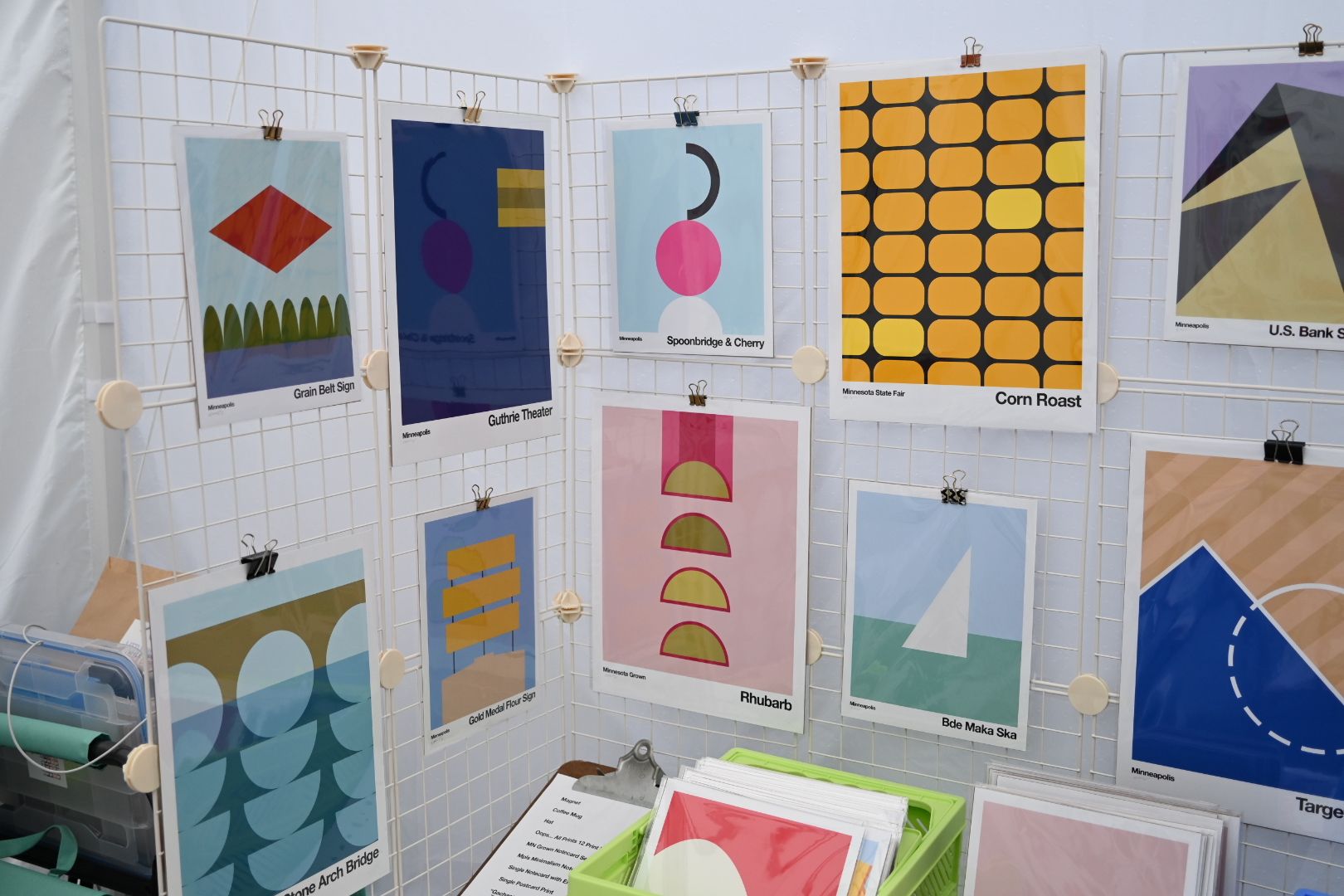
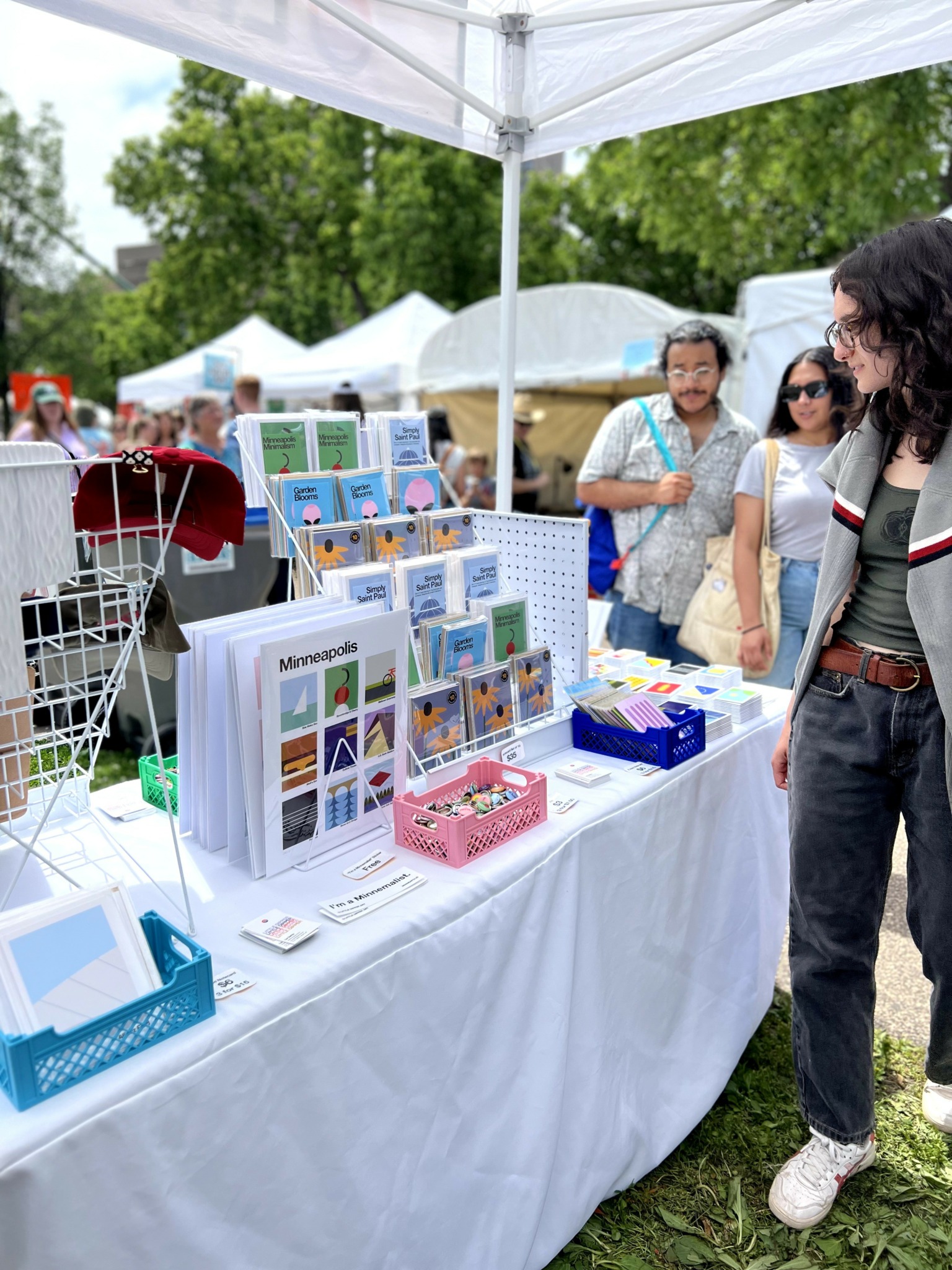
What’s a lesson you had to unlearn and what’s the backstory?
Low prices sell better. Discounts will drive sales. Both of these seem right for a larger company, but I think it’s different for a small business.
In the beginning I had so much anxiety over pricing. If you raise a price, people will notice and won’t buy! If you’re too expensive, people will say no to you. What I’ve learned as I’ve raised my prices over the years–first, people generally haven’t noticed, and even if they have, in a way, higher prices indicate higher value. Even when I offer a discount code, I notice most people still don’t use it. I think they want to support a small business. They don’t expect a BOGO deal or free shipping (most of the time).
I actually think raising my prices on my merchandise has helped sales (as counter intuitive as that sounds). It makes me look more established, like I know my worth. Especially when it comes to custom or freelance work, I’m often second guessing myself. What I’ve learned is to do my research, but not to undersell myself. I often do a gut check with other designers–do you think this is reasonable. Or think of myself as the client, would I pay someone to do this? Ask friends, if your company hired a designer to do X, what would your budget be? How valuable are my designs to their business? How long will they use them? This is all still a work in progress for me–asking for more, setting the bar higher for myself.
Contact Info:
- Website: https://www.littledipper.store
- Instagram: https://www.instagram.com/little_dipper_art/#
- Linkedin: https://www.linkedin.com/in/lizderby/
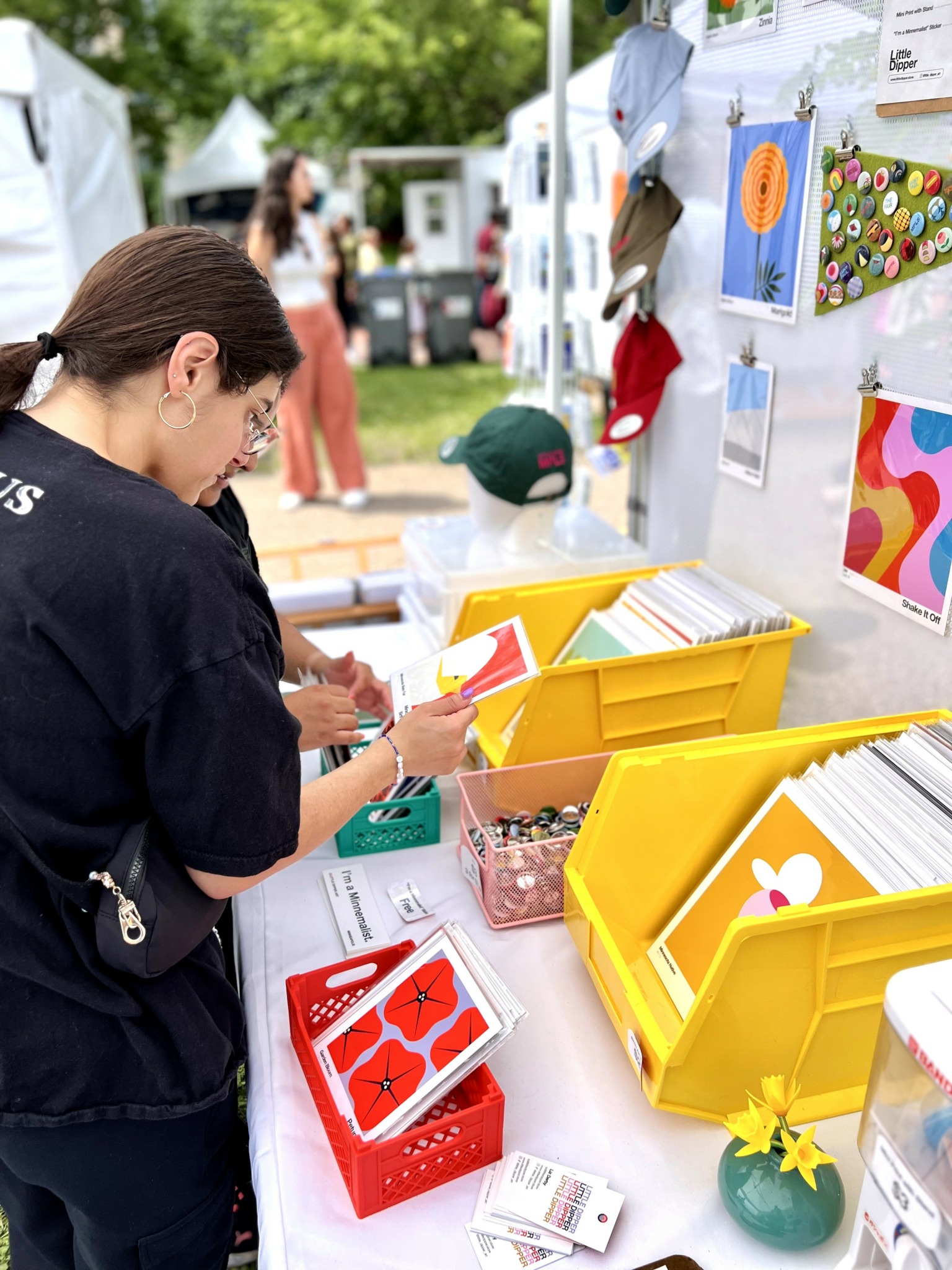
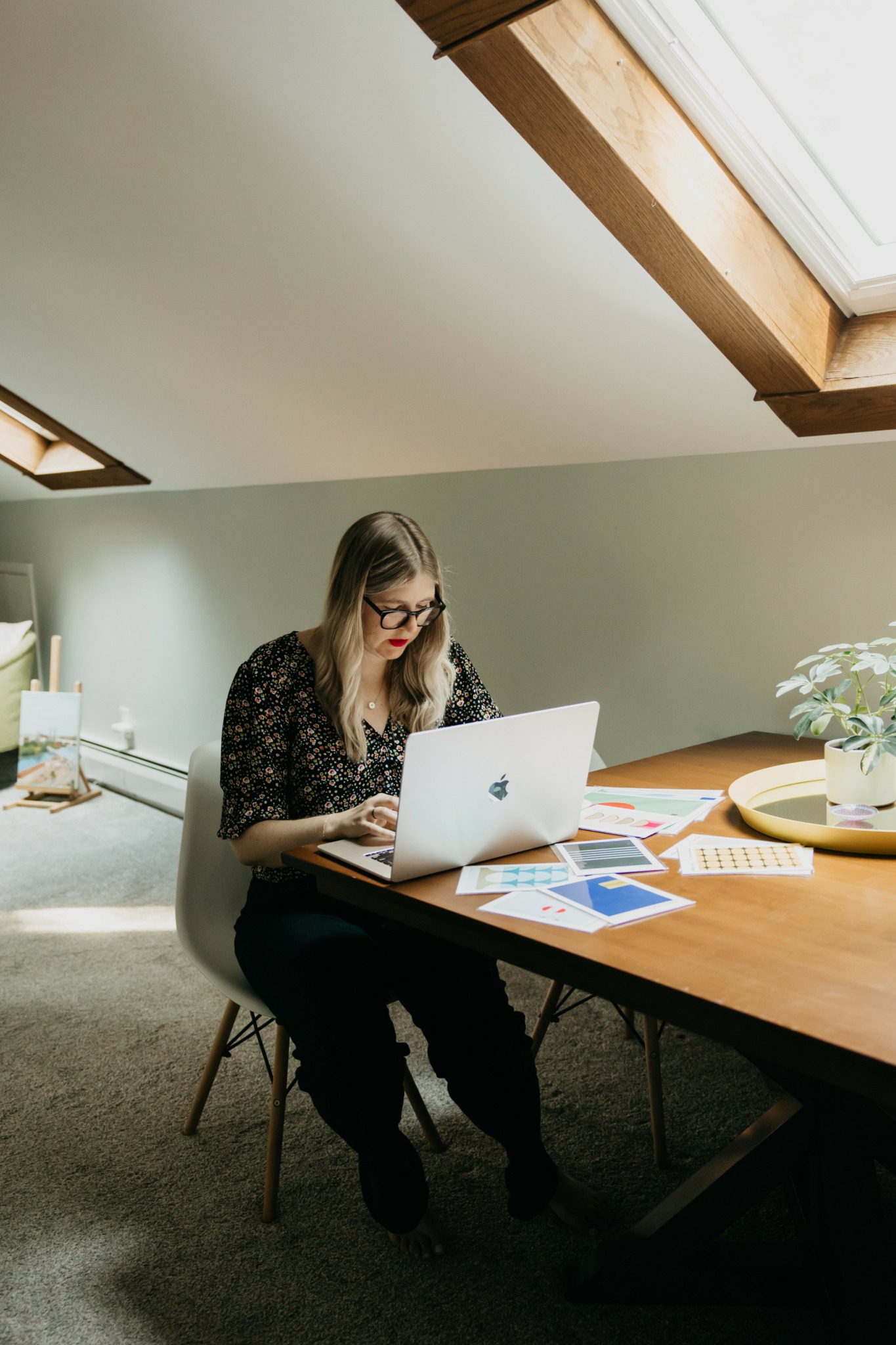
Image Credits
Mycah Bain Photography


